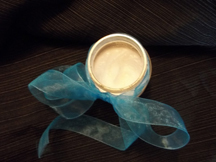How to Make Your Own Toothpaste
Following the lastest information on fluoride, I thought it would be a good time to let you know how I make my own toothpaste – and you can too! I’ve used fluoride-free toothpaste for over a decade (and have yet to have a cavity!) but didn’t make my own until the Organic Consumers Association came out with a report listing health and beauty products that contain the carcinogen dioxane. The chemical, which is derived from petrochemicals, was found in startling amounts, in products that claim to be “natural” and may even have the word “organic” in the brand name. Unless the product has the USDA Organic Seal, it doesn’t have to meet any specific standard, which can be very deceiving. Unfortunately, the company that makes the “natural” toothpaste I had been using was on the list. It was then that I discovered how easy and cost-effective it is to make my own. In doing so, I was also avoiding other potentially harmful ingredients such as glycerin, which according to some creates a sticky coating on teeth, preventing re-mineralization, and sodium lauryl sulfate (“SLS”), which creates the foaming action not only in toothpaste, but also soap, shampoo and detergent. SLS can be irritating and drying to the skin and once absorbed but more importantly, it has an estrogen-mimicking effect, which may contribute to illnesses where hormonal imbalances play a role such as PMS and breast cancer. While homemade toothpaste does not get frothy like commercial toothpaste, it leaves the teeth and mouth feeling clean and refreshed all the same.
Ingredients:
2 Tbsp. coconut oil
2 tsp. finely ground sea salt or himilayan salt
1/4 tsp. stevia
20 drops of pure essential spearmint or peppermint oil
Mix all ingredients and store in a small glass jar. If it is too cold, the coconut oil may need to warmed up slightly, but it melts above 72 degrees. If this occurs after making your toothpaste such as in summer months, it may need to be mixed occassionaly, but it will remain effective. In the same respect, if it is too cold, a utensil may be needed to spoon out a small amount for use. Despite its sensitivity to temperature, I prefer coconut oil to other oils because it is a stable, saturated fat, and therefore, is less likely to go rancid like other, less stable, mono- or poly-unsaturated fats. Coconut oil also has anti-bacterial and anti-microbial properties which makes it a good choice for cleaning the mouth. Salt kills bacteria as well, and combined with a small amount of baking soda, it provides gentle abrasion. Stevia has a strong flavor and very little is needed to add just enough sweet. To give it the familiar minty taste of toothpaste I used essential oil. Personally, I like spearmint oil, but peppermint oil can be used, as well as cinnamon oil, according to your personal preference. After using this toothpaste, many friends commented that my teeth looked whiter! I hope you enjoy it too!
Sources:
http://www.organicconsumers.org/bodycare/index.cfm
http://www.natural-health-information-centre.com/sodium-lauryl-sulfate.html
http://www.healingteethnaturally.com/tooth-remineralisation-demineralisation-saliva-ph.html
